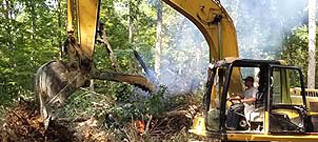By State Senator Roy Dyson (D-29th)
Hurricanes are the largest of storms and are accompanied by sustained winds of 74 mph or more as well as storm surges of 8 feet or more. During the hurricane season, which runs from June 1 to November 30, about five hurricanes strike the United States coastline every three years. Of these five, two will be major hurricanes; Category 3 or greater.
Category 1 hurricanes have winds from 74 to 95 mph and do relatively little damage.
Category 2 hurricanes have winds from 96 to 110 mph and primarily damage roofing, vegetation, mobile homes and piers. Coastal and low-lying escape routes flood 2 to 4 hours before arrival of the center. Flooding near the coast destroys smaller structures with larger structures damaged by floating debris. Small craft in unprotected anchorages break moorings.
Category 3 hurricanes have winds of 111 to 130 mph and do basically the same damage as Category 2 hurricanes, only to a greater range and intensity.
Category 4 hurricanes have winds of 131 to 155 mph causes major beach erosion and damage to structures close to the beach. Massive evacuation of residential areas as far as 6 miles inland is usually required because of flooding.
Category 5 hurricanes have winds greater than 155 mph and cause complete roof failure on residences and industrial buildings. Evacuation of residential areas on low ground within 5 to 10 miles of the shoreline may be required.
A hurricane WATCH means that hurricane conditions are possible in an area within 24-36 hours. A hurricane WARNING is issued when hurricane conditions are expected in a specified coastal area in 24 hours or less. Prepare for high winds by installing hurricane shutters or ½ inch outdoor plywood at windows, bringing in outdoor furniture and trimming dead and diseased limbs from nearby trees.
If you are caught at home or at work, when a hurricane occurs, stay away from windows or doors. Take refuge in a small interior room, closet or hallway. Close all interior doors. Secure and brace external doors. Lie on the floor under a table or another sturdy object. DO NOT BE FOOLED BY THE "EYE" OR THE LULL THAT OCCURS AS THE STORM CNTER MOVES OVERHEAD. The other side of the hurricane "eye" has winds that will rapidly increase and will come from the opposite direction.
Assembling a Disaster Supplies Kit, include:
-- First aid kit and essential medications
-- Canned food and can opener
-- At least three gallons of water per person
-- Protective clothing - rainwear and bedding or sleeping bags
-- Battery-operated radio, flashlight and extra batteries
-- Special items for infants, elderly or disabled family members
-- Written instructions on how to turn off electricity, gas and water, if authorities advise you to do so - Remember, you will need a professional to turn them back on
Preparation for Hurricanes Evacuation:
-- Have a specific evacuation plan -a relative's or friend's home, another town, a motel or a shelter.
-- Keep telephone numbers of these places as well as a road map of your locality for use of alternative or unfamiliar routes.
-- Listen to NOAA Weather Radio or local radio or TV stations for evacuation instructions. If advised to evacuate, do so immediately.
-- When evacuating take with you: Prescription medications and medical supplies, bedding, bottled water, battery operated radio and extra batteries, first aid kit and flashlight.
-- Documents, including driver's license Social Security card, proof of residence, insurance policies, wills, deeds, birth and marriage certificates
No hurricane should be taken lightly. Agnes, which occurred in June 1972, was Maryland's most damaging hurricane in recent times. It claimed 129 lives, brought 14.5 foot flood waters and left in its wake $11.6 billion in damage. Agnes was only a category 1 hurricane with winds of 85 mph.
Isabel, which occurred in September 2003, roared through the Mid-Atlantic from North Carolina to New York. It took 23 lives - 14 in Virginia and 2 in Maryland. Damages in Maryland totaled $621million. Isabel brought storm surges of 8 feet. The federal government declared Maryland, Virginia and North Carolina Disaster Areas. Isabel was a category 2 hurricane with winds of 105 mph.
By no means, does this article include all should know about hurricane protection. I attempted to inform you of some of the basic things you should know. For further information, contact the American Red Cross National Headquarters 1-800-733-2767 or http://www.redcross.org/services/disaster/0,1082,0_587_,00


